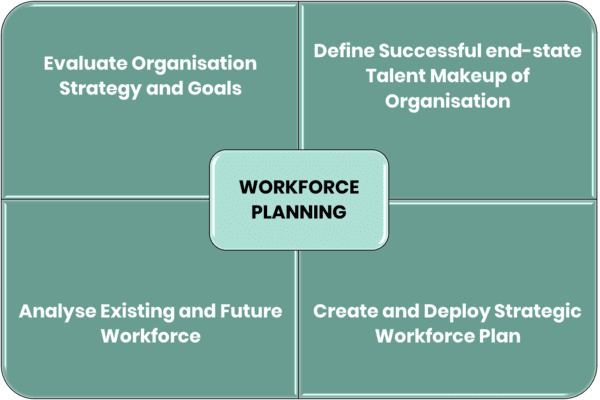“It is not the most intellectual of the species that survive; it is not the strongest that survives, but the species that survives is the one that is able to adapt and adjust to the changing environment in which it finds itself.”
– Leon C. Megginson
There is no doubt that COVID-19 has been a major catalyst for change. As social distancing becomes the new normal, the workforce of organisations is required to connect and collaborate remotely. COVID-19 has not just changed the work environment, it has changed the nature of work and its size.
Due to the economic impact of the pandemic on businesses, the conversation of laying off employees has become a common one. As businesses are trying to survive, cost reduction is now in the front burner of topics being discussed. With the number of jobless claims rising weekly and the spread of the virus plunging economies all over the world into recession, there is a need for organisations to become more strategic in rightsizing if they need to. Great talent and talent you need for the future must not be lost today because every organisation will need people to survive and ultimately thrive.
The cost to replace a highly trained employee can exceed 200% of their annual salary, according to Dickson (2017). This makes retention a high priority for organisations who wish to retain knowledge and repeat the benefits of employee training. Statistics have shown over the years that it costs more to hire lost skills. Dickson (2017), also says more than 50% of all organisations globally have difficulty retaining some of their most valued employee groups. With retention being a big issue, organisations cannot afford to lay off staff without being sure it is the right decision. And this decision must not be made subjectively but objectively. Infusing objectivity into the workforce resizing process demands an accurate workforce analysis to both define the current critical roles needed to deliver on the refocused strategy of an organisation post-COVID-19 and the future needs of the same organisation.
In implementing a strategic workforce analysis, some key questions to ask are:
- What are we trying to achieve as a business?
- What amount of work are we able to do?
- Is our current employee workload commensurate to output?
- What are the key services/products of our business?
- Which roles are critical to our business?
- Which roles should we retain/outsource?
- What is our staff strength?
- Do we have all the job roles required to continue to be in business?
- What is the demand and supply for talent like now?
These questions and more need to be answered with the guide of an expert. Workforce analysis involves identifying the current and anticipated future supply of labour, skills, and competencies in an organisation. This process aids effective workforce planning and introduces objectivity into managing employees with business efficiency in mind. With proper workforce analysis and planning, critical roles are identified for now and for the future. Important skills are assessed, and duplicated roles are recognised deployed appropriately, thereby creating an efficient workforce that delivers on business objectives.
pcl. Strategic Workforce Planning Methodology
At pcl. our Workforce Analysis and Planning services involve a robust approach of evaluating the strategic intent of the organisation, defining what success will mean for the business, and analysing existing and future workforce. Organisation leaders must have a holistic approach to talent and skills management that is linked to strategy and is periodically reviewed for relevance. They must also be able to provide adequate support to employees to guide them through new work practices, new technologies and new policies. Employees, on the other hand, would be required to learn faster as new skills, products and tool would be introduced to aid new working processes.
To find out more about our Workforce Analysis and Planning Service, send a mail to people@phillipsconsulting.net
Written by:
 |
 |
| Chidera Onyeanusi
Analyst |
Esther Amoye
Senior Consultant |

